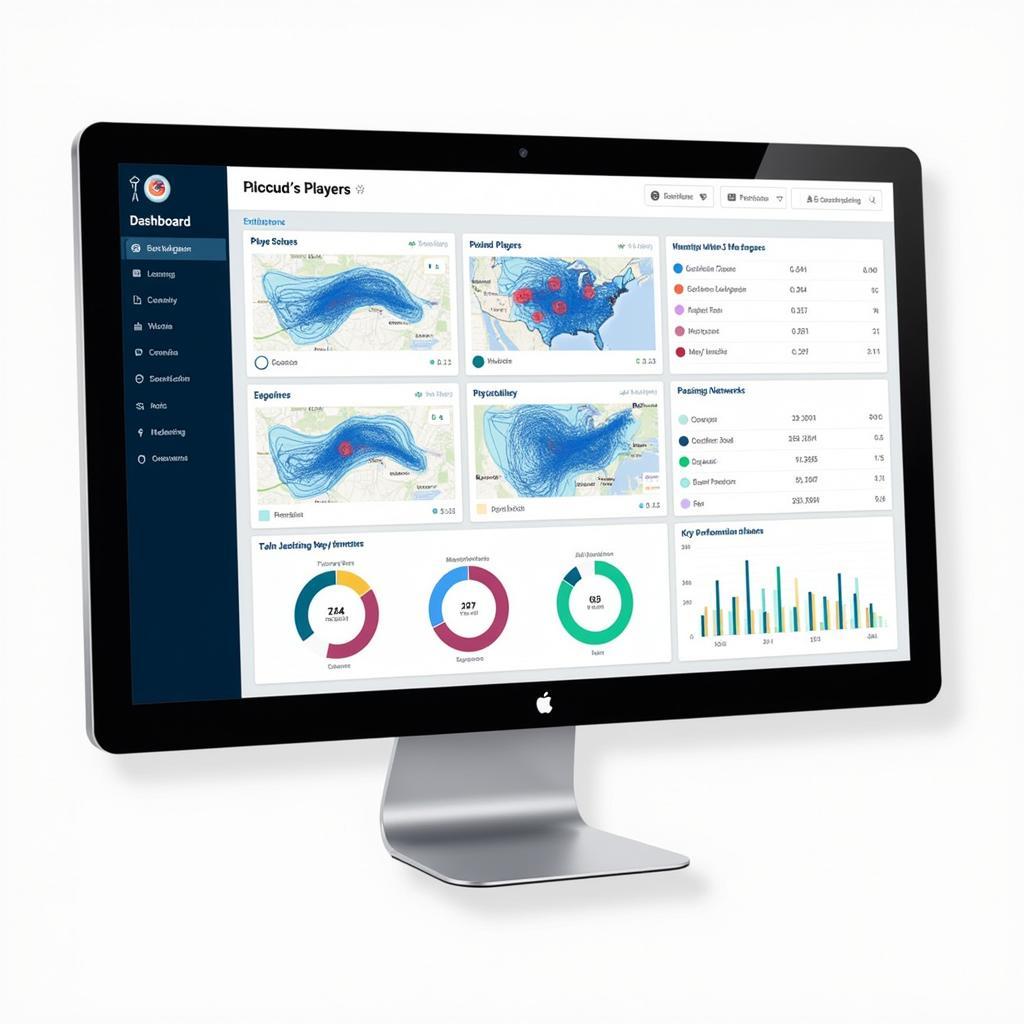The Science Behind Football: How Data is Transforming the Beautiful Game
October 20, 2024As a striker, my job is simple: score goals. But the reality of modern football is far more complex. Today, the difference between winning and losing is often decided not just on the pitch, but also in the data labs. We’re witnessing the rise of the “football data scientist,” meticulously analyzing every pass, shot, and movement to unlock hidden patterns and gain a competitive edge.
From Gut Feeling to Data-Driven Decisions
Traditionally, football relied heavily on intuition and experience. Coaches used their knowledge and gut feelings to make decisions on formations, tactics, and player selections. While this still holds value, the influx of data has revolutionized the way teams prepare and play. We now have access to an unprecedented amount of information, allowing for more informed and strategic decision-making.
 Data Analysis in Football
Data Analysis in Football
The Power of Player Tracking and Performance Analysis
One of the most significant advancements is player tracking technology. Wearable sensors and high-definition cameras capture every move on the field, providing a wealth of data points. We can now analyze a player’s:
- Total distance covered: Crucial for understanding workload and stamina.
- High-intensity sprints: Reveals explosive power and recovery rates.
- Passing accuracy and efficiency: Highlights playmaking abilities and tactical awareness.
- Shooting statistics: Provides insights into finishing skills and shot selection.
 Football Player Performance Dashboard
Football Player Performance Dashboard
This data allows coaches to tailor training regimes, optimize player positioning, and even predict fatigue levels, reducing the risk of injuries. For players like myself, it’s an invaluable tool for identifying areas of improvement and maximizing our strengths.
Tactical Insights: Unlocking the Opposition’s Secrets
Data science in football isn’t just about individual players; it’s also about dissecting the game as a whole. By analyzing vast datasets of match footage, we can:
- Identify opponent weaknesses: Exposing vulnerabilities in formations or individual players.
- Predict patterns of play: Anticipating opponent strategies and reacting accordingly.
- Optimize set-pieces: Gaining a crucial advantage in dead-ball situations.
This level of tactical insight can be the difference between a stunning victory and a heartbreaking defeat.
The Future of Football: A Data-Driven Dynasty?
As data collection and analysis techniques continue to evolve, so too will their impact on football. We can expect to see:
- Artificial Intelligence (AI): AI-powered platforms will provide even deeper insights and predictive capabilities, potentially revolutionizing scouting and recruitment.
- Virtual Reality (VR) Training: VR simulations will allow players to experience realistic match situations and refine their skills in a controlled environment.
- Fan Engagement: Data-driven insights can enhance the fan experience through personalized content, interactive statistics, and a deeper understanding of the game.
Conclusion
The beautiful game is evolving, and data science is at the forefront of this revolution. From optimizing player performance to unlocking tactical advantages, data analysis is transforming the way football is played and understood. As someone who strives for excellence, I’m excited to see how this data revolution will shape the future of football, pushing the boundaries of what’s possible on the pitch.